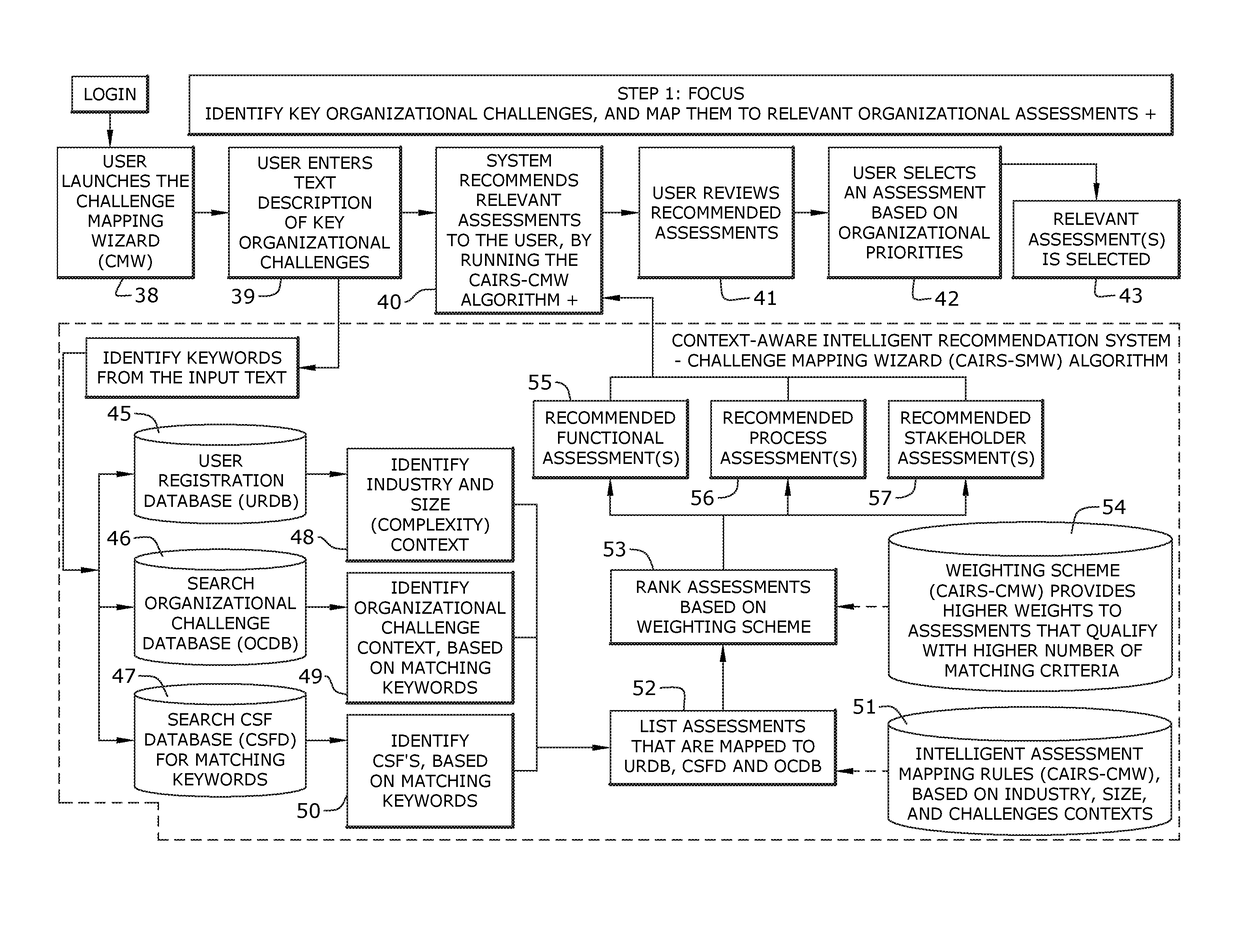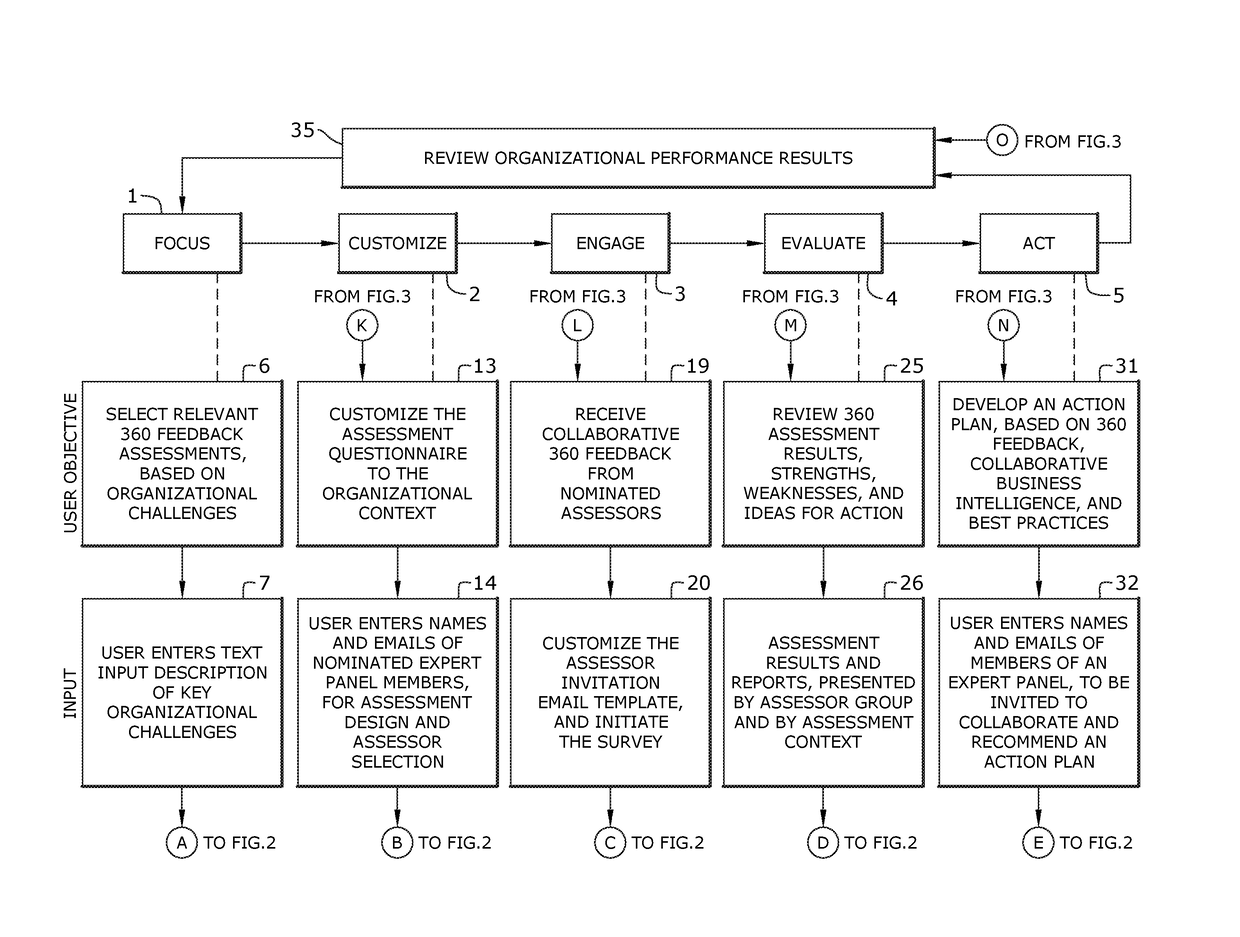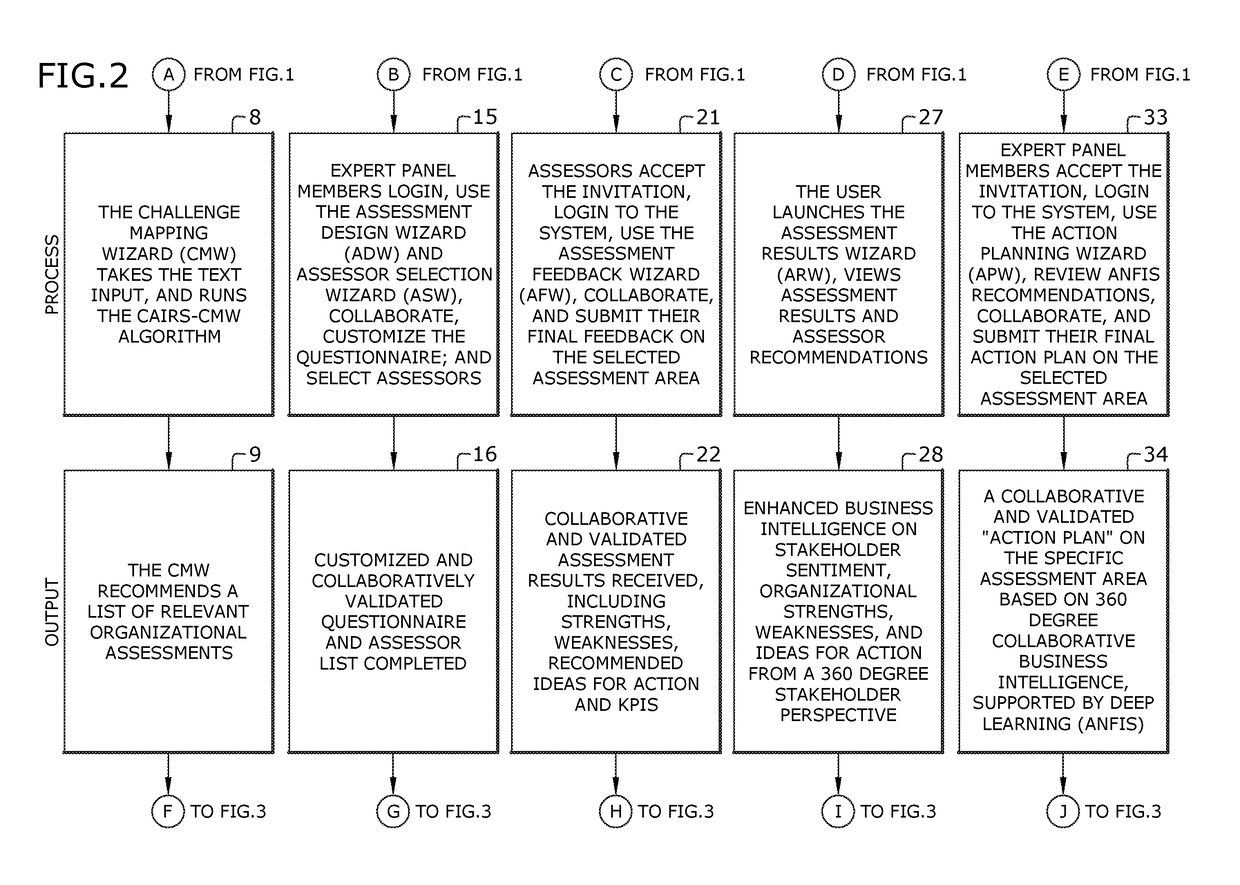Intelligent real-time 360° enterprise performance management method and system
a real-time, intelligent technology, applied in the field of business performance management, can solve the problems of disconnecting from traditional 360 degree feedback systems and methods, affecting the performance of enterprises, and not improving company performance through multi-rater assessmen
- Summary
- Abstract
- Description
- Claims
- Application Information
AI Technical Summary
Benefits of technology
Problems solved by technology
Method used
Image
Examples
Embodiment Construction
[0054]Referring now to the drawings, and initially to FIG. 1, FIG. 2, and FIG. 3, an exemplary system for implementing one embodiment, incorporating the intelligent real-time 360 degree business performance assessment and action planning process; the invention includes a systematic 5-step implementation process and framework for conducting organizational assessments. The first step in the assessment process is ‘Focus’1 in which the user has the objective 6 to select organizational assessments that are relevant to the organizational challenges. In order to accomplish this, the user inputs 7 text descriptions of the organizational challenges into the system using the challenge mapping wizard (CMW), which implements the Context-Aware Intelligent Recommendation System (CAIRS)-CMW algorithm process 8, in order to recommend relevant organizational assessments as the output 9. The action to be taken by the assessment ‘owner’10 is to view the recommended assessments and select one to be car...
PUM
 Login to View More
Login to View More Abstract
Description
Claims
Application Information
 Login to View More
Login to View More - R&D
- Intellectual Property
- Life Sciences
- Materials
- Tech Scout
- Unparalleled Data Quality
- Higher Quality Content
- 60% Fewer Hallucinations
Browse by: Latest US Patents, China's latest patents, Technical Efficacy Thesaurus, Application Domain, Technology Topic, Popular Technical Reports.
© 2025 PatSnap. All rights reserved.Legal|Privacy policy|Modern Slavery Act Transparency Statement|Sitemap|About US| Contact US: help@patsnap.com



